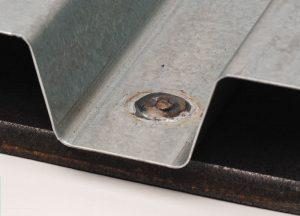

Since CFS is not a food source, you don’t have to worry about rotting, mold or issues with insects or termites. Unlike wood, which can warp or twist, CFS holds it shape and length. Ability to construct taller residential buildings: Wood is usually limited to 4 or 5 stories of load bearing buildings, whereas CFS allows you to build 12 or 13 stories.Securely anchor tracks to supports as shown.
Install cold-formed steel framing according to AISI S202 and to manufacturers written instructions unless more stringent requirements are indicated. Non-combustible: CFS will not ignite or burn, which helps with a building’s fire rating and overall safety. Install cold-formed framing in accordance with ASTM C1107 and AISI S200.
 Increased return on investment: CFS is easier and quicker to install compared with wood, which means you’ll spend less time on the construction site. Cold-formed steel framing may be shop or field fabricated for installation, or it may be field assembled. The special inspector shall verify the size, quality, framing, erection. Install cold-formed framing in accordance with ASTM C1007 and AISI S200 'North American Standard for Cold-Formed Steel Framing - General Provisions and to manufacturers written instructions unless more stringent requirements are indicated. It’s also one of the biggest benefits of working with cold-formed steel framing. Special Inspections for prefabricated and site built cold-formed steel. The special inspector shall verify the size, quality, framing, erection, and both temporary and permanent bracing. Strength-to-weight ratio: This refers to the fact that CFS is relatively lightweight compared to its strength. Cold-formed steel framing has become a popular choice in construction projects, and for good reason.
Increased return on investment: CFS is easier and quicker to install compared with wood, which means you’ll spend less time on the construction site. Cold-formed steel framing may be shop or field fabricated for installation, or it may be field assembled. The special inspector shall verify the size, quality, framing, erection. Install cold-formed framing in accordance with ASTM C1007 and AISI S200 'North American Standard for Cold-Formed Steel Framing - General Provisions and to manufacturers written instructions unless more stringent requirements are indicated. It’s also one of the biggest benefits of working with cold-formed steel framing. Special Inspections for prefabricated and site built cold-formed steel. The special inspector shall verify the size, quality, framing, erection, and both temporary and permanent bracing. Strength-to-weight ratio: This refers to the fact that CFS is relatively lightweight compared to its strength. Cold-formed steel framing has become a popular choice in construction projects, and for good reason.






 0 kommentar(er)
0 kommentar(er)
